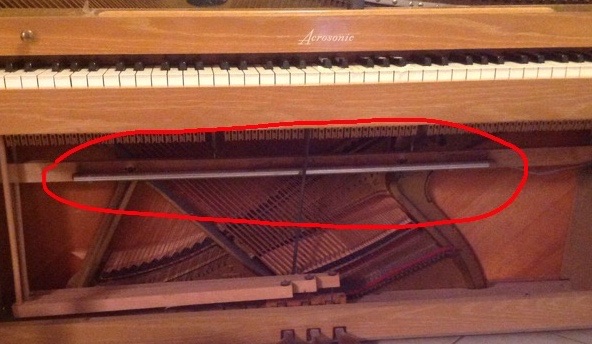
What is the bar with the red freehand circle? You can see it has a cord coming out to the right.
I'm unable to try plugging it in and seeing what it does because it's an incompatible cord with my locale.
The piano is a Baldwin Acrosonic. I don't know how old it is.
